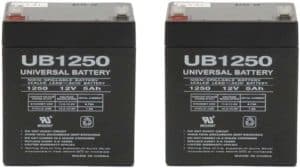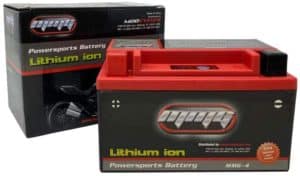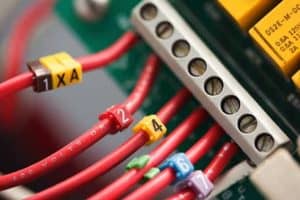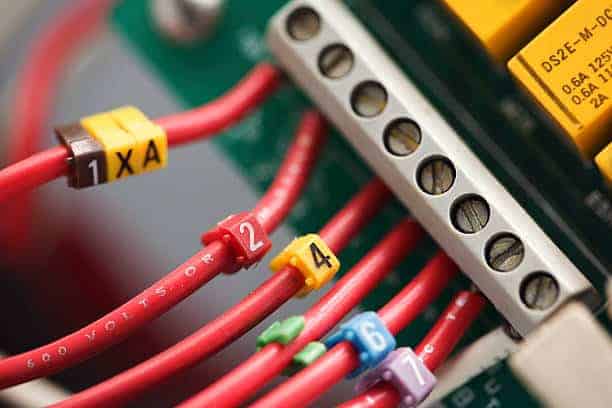Comparison Chart
| Scooter | Full Charge Time | Type of Battery |
| Hurtle HURES 18-M5 Electric Scooter for Adults & Kids | 4-6 hours | Lithium-ion |
| Mtricscoto Foldable Adult Electric Scooter | 4~6 hours | Lithium-Ion 36 V / 7.5 Ah |
| Segway Ninebot | 6 Hours | Lithium-ion |
| JOYOR X5S Electric Scooter | 6-7 hours | lithium |
| Hurtle HURES 18-M5 Electric Scooter for Adults & Kids | 4-6 hours | Lithium-ion |
| BEEYEO Electric X7 Scooters for Adults | 4-6 hour | Lithium-ion |
| Gyroor Electric Scooter for Adults | 3 hours | lithium |
| Razor E300S Seated Electric Scooter | 12 hours | 24V (two 12V) sealed lead acid |
| Razor E200S Seated Electric Scooter | 12 hours | 24V Seal |
| WesternPacific 2000W Electric Wide Fat Tire Scooter Chopper/Harley Design CityCoco Bike | 4-6 Hours | 20AH Lithium |
| TOXOZERS Adult Citycoco 60v 1000W Fat Tire Scooter | 4-8 hours |
60v (Five 12v/12ah SLA lead–acid
|
| Phoenix 4-wheel Heavy Duty Scooter | 10 hours | sealed lead acid |
| EV Rider TranSport – Automatic Folding Scooter | 3 to 4.5 hours | lithium |
Types of Scooter Batteries
Lead Acid
 These are the oldest types of batteries still in use on electric scooters. They are a lot like your car’s battery, and they work by creating an electrical charge through a chemical reaction. It is a complicated chemical reaction that produces an electrical charge. Still, you should know that the main components in your lead acid battery are lead, separators, sulfuric acid, and water.
These are the oldest types of batteries still in use on electric scooters. They are a lot like your car’s battery, and they work by creating an electrical charge through a chemical reaction. It is a complicated chemical reaction that produces an electrical charge. Still, you should know that the main components in your lead acid battery are lead, separators, sulfuric acid, and water.
There are several types of Lead Acid Batteries. For example, there are sealed lead-acid batteries, open led acids, gelled electrolytes, and absorbed glass mats. Sealed lead-acid batteries are considered maintenance-free, and that was the motivation for creating them in the first place.
The lead-acid battery is used less and less because a more efficient battery replaces them with a much higher power-to-weight ratio, a higher peak output level, and a longer-lasting discharge rate. This new type of battery is the lithium-ion type.
In the case of a lead-acid battery, you should:
- Use it often and discharge the battery until it weakens quite a bit (no need to fully discharge as that creates wear on the battery that causes other issues in the long run).
- Fully recharge the battery once again, directly after the discharge occurs and while the battery is still warmed up (but do not overcharge)
Lithium-Ion
 Lithium-ion (L-ion) batteries are a relatively modern technology spreading into everything. Initially designed, we needed lighter and smaller batteries that could still power our electronics, like our cell phones. Cell phones have been a massive motivator in creating new battery technology. The improvements to battery design can largely be accredited to these communication devices taking over the world. Everyone has a cell phone, which equals billions of batteries. The industry has become massive because of these, and society has become dependent on all the other portable electronics.
Lithium-ion (L-ion) batteries are a relatively modern technology spreading into everything. Initially designed, we needed lighter and smaller batteries that could still power our electronics, like our cell phones. Cell phones have been a massive motivator in creating new battery technology. The improvements to battery design can largely be accredited to these communication devices taking over the world. Everyone has a cell phone, which equals billions of batteries. The industry has become massive because of these, and society has become dependent on all the other portable electronics.
Many different types of lithium-ion batteries are variations of this original design, and each improves upon its predecessor. For example, after moving away from lithium metal positive and the LiCO2 compound negative anode, the second form of Li-ion batteries was a lithium cobalt oxide (LCO) battery that used that as its lithium ionic compound. It had safety issues as well as a less-than-ideal power potential.
So, the modern Li-ion batteries are safer, more powerful, lighter, and more compact than the lead-acid battery types, perfect for powering your electric scooter. It will last for decades as long as you take care of it and regularly charge and discharge the battery’s electrical charge. They even have a longer shelf life. They can go longer periods between uses than their predecessors without losing potential energy due to corrosion, crystallization, or any other issues that lead-acid batteries were known for. The only downside to L-ion batteries is that they cost more to produce due to the materials involved, which means they cost more for consumers to purchase. But with their long lifespans and improved power statistics in every aspect, they are the go-to choice for most scooter manufacturers nowadays. They are what comes stocked on most scooter models straight from the assembly line.
Charging Electric Scooter
If you have an electric scooter and depend on it for regular travel, you need to know its battery and charging. By learning about your electric scooter’s battery and its charge, you will be better able to take care of it.
Please take out your battery charger, connect it to an electrical outlet and turn on the switch. The charger light should glow green, indicating that the charger is good.
Now, connect the battery end of the charger to the charging port and turn on the power; the charger’s light should glow red, indicating that charging is in progress.
Charge the battery for the time recommended in your owner’s manual; this can take 3 to 12 hours. When the battery is fully charged, the LED on the charger will light up green, indicating that charging is complete, and you can remove the charger from your electric scooter. All this happens when everything is working correctly.
However, sometimes your battery may not be charged even after the charge is complete. There may be several reasons for this. Let’s consider them one by one.
Why your Electric Scooter is not charging?
Are you using a suitable charger?
 There may be confusion between chargers if you have more than one electric scooter. Check the label on the charger. The charger’s voltage should be slightly higher than the battery’s voltage. For example, a 39-volt charger to charge a 36-volt battery.
There may be confusion between chargers if you have more than one electric scooter. Check the label on the charger. The charger’s voltage should be slightly higher than the battery’s voltage. For example, a 39-volt charger to charge a 36-volt battery.
No green light comes on when the charger is plugged into the mains.
Your charger may have a built-in fuse or circuit breaker. Check and correct it. If the charger works now, use it.
If the fuse or circuit breaker is intact, take a voltmeter or multimeter and test the voltage output of the charger. If the voltage is zero or lower than the battery voltage, the charger is defective and gets a new charger.
Check the mains current and the charger port.
Check the port with the multimeter and replace the defective charger. Maybe the charger port has become loose, or there may be a loose connection.
Check if the battery has reached the end of its life.
Remove the step, physically examine the battery and look for leaks. If the battery appears in good condition, test the battery voltage.
The actual battery voltage is slightly higher than its stated value. For example, the actual voltage of a 36-volt battery maybe 38 or 39 volts.
If the battery voltage is low, you should replace the battery. Check the battery’s history and ensure it is old and has lived its life. If you are unsure, ask a battery technician for help.
The charger light turns green shortly after charging.
Continue charging for the recommended time. You should test the battery if the charged battery is not delivering its rated power (scooter speed and mileage).
An aged battery can lose voltage quickly. Check the battery’s history and age, and ask the battery technician for help if necessary.
What can you do to improve the battery life of your electric scooter?
The life of your electric scooter’s battery can be measured in terms of the number of charge cycles, years, or the total number of miles. However, it mainly depends on how you use and care for your electric scooter, including the battery.
Electric scooters are generally reliable, durable, and require very little maintenance. However, you must be careful because the parts are delicate and sensitive.
Here are some of the things you should do to improve the life of the battery:
- Do not overcharge your battery, as overcharging can shorten the battery’s life and damage it.
- Always use the correct charger (received with your scooter) for best compatibility.
- Choose a cool, ventilated place to charge your electric scooter’s battery to improve its life.
- Do not charge your electric scooter battery immediately after a ride. Let it cool down for at least 15 minutes before plugging it in to charge.
- Don’t rely on your electric scooter’s display to know the charge status. Instead, rely solely on the light on your charger turning green to indicate a full charge.
It is good to charge the battery after using it all day. It is good practice to charge the battery after each use, even if it is not completely discharged. - Your scooter’s display panel will indicate the battery’s charge status, green for a full charge, red for no charge, and one or two other colors to indicate an intermediate level. Please don’t wait until the battery is completely discharged to recharge it, do it when it still has charge.
- Keep a history of your battery, such as the battery ID number, date of manufacture, the date you started using it, and battery details (number of batteries, total volts, and amp hours).
- When your electric scooter is stored for a long period, charge it up to 70%, and remove the connection between the battery terminals and the electric scooter. Check the battery and charge it at least once a month. If you leave the battery unattended for a long time, it will deteriorate and lose its life.
- Park your scooter in a place not exposed to water, dust, rodents, or very high temperatures.
- Do not overcharge your electric scooter.
- After the charging time, the LED on the charger port should light up green to indicate that the battery is charged. If the LED turns green within a short period, continue to charge the battery for its entire duration.
